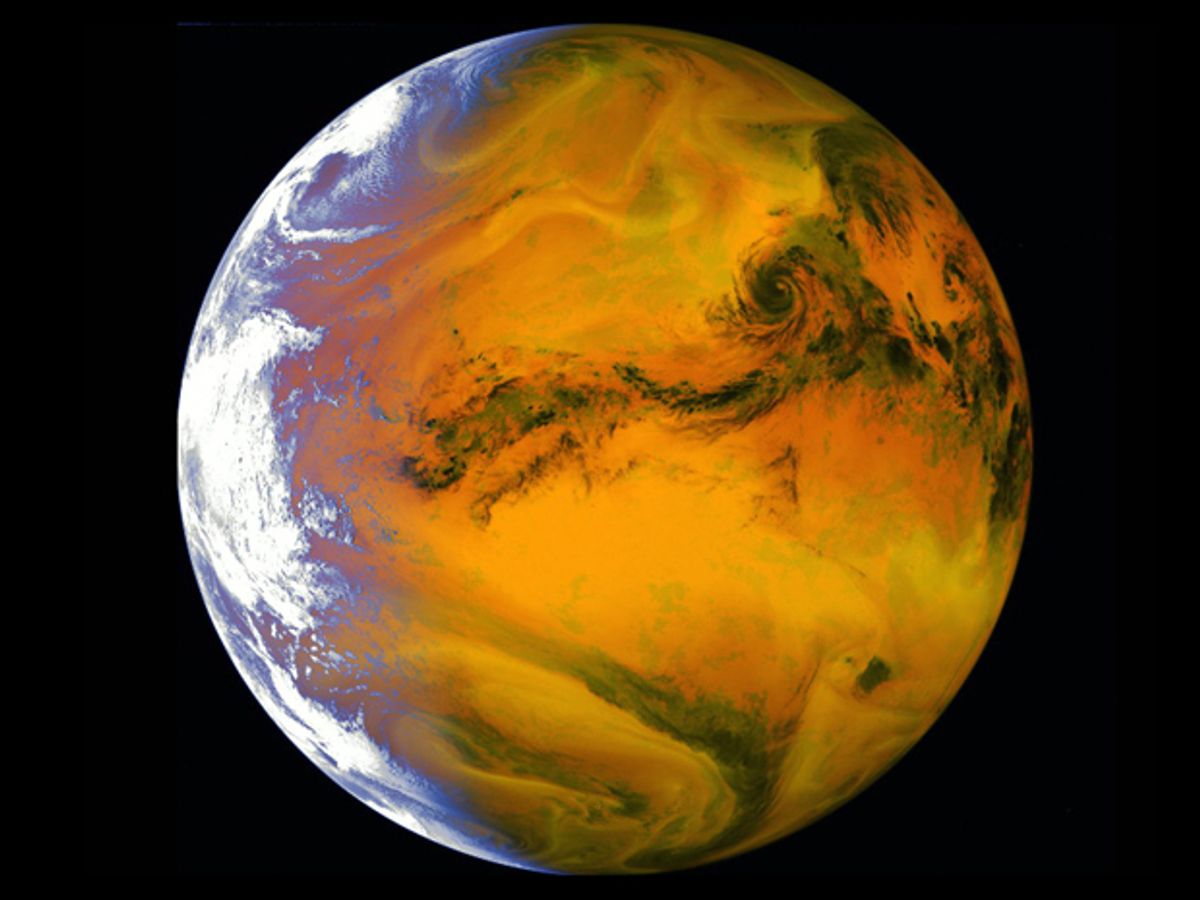The Earth continuously emits 100 million gigawatts of infrared heat into outer space. That’s enough to power all of humanity many thousands of times over. Capturing even a fraction of that would mean an end to our energy woes. Harvard University researchers are now proposing a way to harvest this untapped source of renewable energy.
They have come up with two designs for a device they call an “emissive energy harvester” that would convert IR radiation into usable power. Today's technology isn't sufficient for an efficient, affordable harvester, the researchers say. But they've laid out a few different paths towards such devices in the journal Proceedings of the National Academy of Sciences.
It seems counterintuitive, but the devices generate power by emitting infrared radiation. "The [device] is emitting much more radiation than it receives," says Steven Byrnes, a postdoctoral researcher working in applied physicist Frederico Capasso’s laboratory at Harvard. "This is the imbalance that we can take advantage of to create DC power."
The first design, which they admit is not the most promising, is a heat engine running between the Earth’s surface and a cold plate. The heat flowing from the ambient surface air to the cold plate, which radiates it out into the atmosphere, would be used to do mechanical work. The concept is simple, but cooling the plate efficiently to a low enough temperature is tough, Byrnes says.
As a case study the researchers looked at how much power such a device would generate in Lamont, Oklahoma, where a facility has been measuring IR radiation intensity. They found that they would get an average of 2.7 Watts from the IR radiation emitted by a square meter of Oklahoma over 24 hours, which is pretty low for large-scale power generation.
So the researchers turn to rectifying antennas, or rectennas, devices that absorb electromagnetic radiation and convert it into direct current electricity. A rectenna is an antenna coupled with a diode. Radiation induces an AC voltage across the antenna, which the diode rectifies to DC.
The researchers argue that rectennas can be run in reverse, generating DC power while emitting radiation, rather than absorbing it. In their design, a nanoscale antenna very efficiently emits Earth's infrared radiation into the sky, cooling the electrons only in that part of the circuit. Because the diode is at a higher temperature than the antenna, current only flows from the diode to the antenna. And because the antenna acts as a resistor, this results in a voltage.
Rectennas are traditionally used to generate power from microwaves, but can be used for higher frequency radiation, all the way up to visible light. Infrared frequency rectennas are a developing technology and the proof-of-principle devices demonstrated so far would generate very little power. But technological advances could improve their efficiency, Byrnes says.
Applying solar-cooking techniques such as reflectors to heat up the rectennas could also increase efficiency. For example, in the Lamont, Oklahoma case study, raising the temperature of a rectenna-based harvester from 20° C to 100° C using solar-cooking techniques would increase the power density of a rectenna from 1.2 W/m2 to 20 W/m2. “Solar panels for heating and cooking are already used in much of the world,” he says. “You could easily couple that to the (infrared) harvester.”
The researchers say that IR antennas should be easy to make on large areas at a reasonable cost. The critical challenge will be making diodes that would work well at the low voltages that would be expected in the harvester. The researchers suggest a few options to get around this problem. One is to use specially designed low-voltage diodes such as tunnel diodes and ballistic diodes.
Needless to say, this vision of IR energy harvesters for renewable power rests on engineers overcoming several technical challenges. But Byrnes says that this is a new energy frontier to tackle. He imagines one day a sheet printed with thousands of tiny infrared-harvesting rectennas that could be laminated on a solar panel or integrated into a solar water heater.
Prachi Patel is a freelance journalist based in Pittsburgh. She writes about energy, biotechnology, materials science, nanotechnology, and computing.



